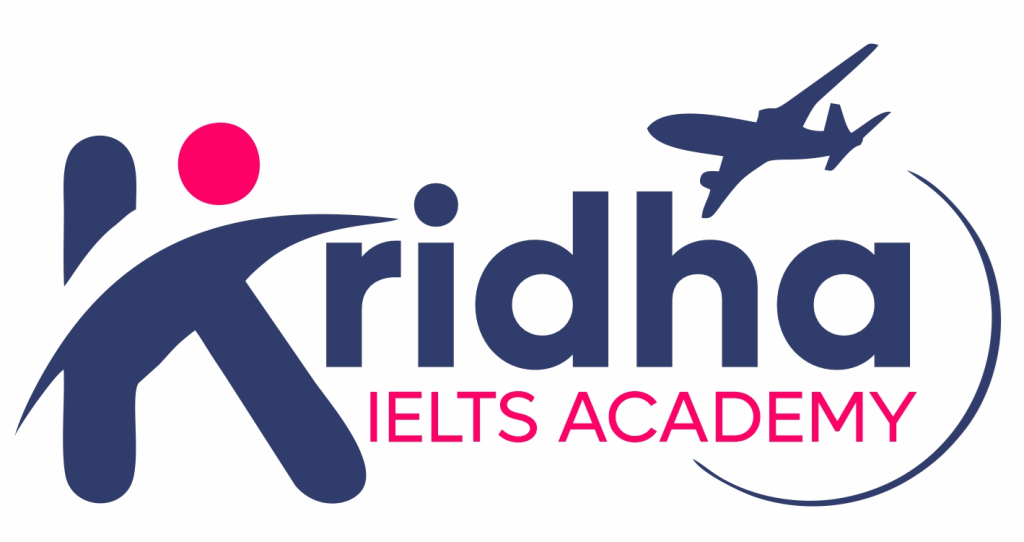Easy IELTS Reading Tips for Better Results

Whether you’re preparing for the IELTS Academic or General Training test, achieving your desired band score is crucial for study or work opportunities abroad. The IELTS Reading test, with its seemingly straightforward format of reading and answering questions, presents significant challenges.
With diverse text types, 40 questions, and 11 task types, success depends on reading swiftly, retaining key information, and analyzing effectively. Enhancing your reading speed and comprehension skills is essential to excel on test day. In this article, we’ll explore effective IELTS reading tips to help you read faster and improve your score on the IELTS Reading test.
What is IELTS Reading?
The IELTS Reading Exam assesses your ability to comprehend written texts, identify main ideas, extract relevant information, and understand arguments, opinions, and purposes. The IELTS Reading section’s Academic and General Training versions last 60 minutes and contain 40 questions. This time frame includes the time needed to transfer answers to the answer sheet. This tutorial provides IELTS reading tips and advice to support your preparation for the exam and improve your performance.
Also Read:
Common Types of IELTS Reading Question (Academic vs. General Training)
Both the General Training and Academic Reading tests feature diverse question formats, including:
- Multiple choice
- Identifying specific information
- Determining an author’s views or claims
- Matching information
- Matching headings
- Matching features
- Matching sentence endings
- Completing sentences
- Completing summaries, notes, tables, flow charts
- Completing diagram labels
- Answering short questions
Abilities Required to Ace IELTS Reading Test
The question formats utilized in the IELTS Reading test assess a range of reading abilities, encompassing:
- Skimming: Reading for the main idea and general understanding
- Scanning: Rapid reading to pinpoint specific information
- Reading for detail: Comprehending logical arguments, opinions, attitudes, and authorial intent.
Top IELTS Reading Tips to Achieve Your Highest Score
Jotted down below are some of the top IELTS reading tips that can help you get a good band score in this section:
Know That the Answer is Always Paraphrased
Answers in the IELTS reading test are always paraphrased, meaning the correct answers will be expressed differently in the text. This requires you to identify the same or similar ideas in different wording or expressions. The test evaluates your ability to comprehend language nuances and understand ideas that may be presented using varied language structures and vocabulary. Therefore, when selecting answers, look for corresponding information in the text that conveys the same meaning, even if the wording is different. This approach is essential for accurately answering questions in the IELTS reading section.
Adopt Chunking Technique for Faster Reading
Traditional word-by-word reading can be slow and inefficient, especially during timed tests like the IELTS. Instead, employ word chunking—processing groups of 3 to 5 words together for quicker comprehension. Practice reading chunks of words and ensure you understand the sentence’s meaning. Start with three-word chunks and gradually increase to five words, using your peripheral vision. Consistent practice with this technique will enhance your reading speed and comprehension, which is crucial for succeeding in the IELTS Reading test.
Be Realistic & Concentrate on Grasping the Ideas Rather Than Specific Words
Take the time to reread passages and express them in your own words. Challenge yourself to explain the content to yourself in simpler terms. This systematic approach helps shift your attention toward understanding the concepts and underlying messages rather than fixating on the exact wording. Remember, the answers you seek within the text will likely be paraphrased, reinforcing the importance of grasping the overall ideas conveyed.
Skim Through the Passage Initially, Then Scan for Details When Answering Questions
After mastering word chunking, a valuable approach is to skim the text for its main points. Quickly review the passage to grasp key details, including the title and questions. Take note of nouns to form a general understanding and observe how the text is structured—whether it’s instructional or narrative. During question answering, switch to scanning for specific details. This method allows you to efficiently navigate the text, enhancing comprehension and quickly retrieving relevant information required for answering IELTS questions.
Read the Questions First & Locate the Proof in the Text Clearly
Read the questions and identify the precise location of the paraphrased answer within the reading passage. Compare it with the keywords in your answer to confirm its accuracy. Underline the identified rephrased line within the passage. Write the corresponding question number above the line in the passage that answers it. Implementing this method helps you maintain focus and avoid guessing during the reading test. It provides certainty that you’ve chosen the correct response. Remember, each question has only one correct answer, and the test is designed with specific locations for these answers within the text.

Practice Speed Reading Avoid Rereading Words for Efficient Reading
Practice reading quickly without sacrificing comprehension is essential. Amid confusion or uncertainty, while reading, the instinct is often to backtrack and reread sentences or passages. However, this habit consumes valuable time as your eyes constantly backtrack. Instead, train yourself to absorb and retain information swiftly by running your finger across the text as you read. This physical movement encourages forward progress, allowing you to grasp information efficiently without frequent rereading, ultimately optimizing your reading speed for the IELTS exam.
Handle Unfamiliar Words Calmly and Use Context Clues
Examine the surrounding text to gain insight into the meaning of unfamiliar words. Context can indicate whether a word is positive or negative, a person or a profession, an animal or a characteristic. Consider prefixes for clues; for example, “un-” denotes reversing an action, “re-” suggests repetition, and “-wise” implies reference to something. Pay attention to grammar; adjectives preceding a noun often describe that noun. Enhance your vocabulary and grasp of prefixes and suffixes in preparation for the reading test. If uncertain, remain composed and move to the next question. Return to the challenging section later with a fresh perspective.
Enhance Vocabulary for Improved Comprehension Speed
A key factor in faster reading is comprehension, which unfamiliar words can hinder. Start by expanding your vocabulary through consistent reading and listening to news sources like BBC and CNN. Actively engage by highlighting or noting unfamiliar words and utilizing a dictionary or thesaurus for clarification. Strengthening your vocabulary not only aids in understanding but also accelerates reading speed by reducing pauses for word comprehension.
Answer Every Question
Avoid leaving any questions unanswered, even if time is running out. Make an educated guess and write something. Since there is no penalty for incorrect answers, guessing might lead to a fortunate correct answer, potentially boosting your score from 6.5 to 7.0 or higher. Always attempt to answer every question, especially when time is limited.
Do Extensive Reading Practice
To prepare for the IELTS Reading test, immerse yourself in various text formats like books, magazines, newspapers, and journals. Enhance your vocabulary by exploring different topics across these mediums. Identify which types of texts pose more challenges for you and focus on them to improve comprehension. Study the structure and flow of passages to become accustomed to the test’s content style and sentence construction. This practice will enhance your ability to navigate diverse texts and improve your performance on the Reading test.
Also Read:
Some Additional Tips for IELTS Reading
Here are some additional effective tips for IELTS reading:
- Identify Keywords: Highlight keywords from the questions to focus on while reading.
- Read and Answer in Succession: Answer questions in the order they appear in the passage to maintain flow and comprehension.
- Check Your Answers: Always review your answers to ensure accuracy and consistency.
- Practice: Regular practice with IELTS materials improves your skills and confidence.
- Identifying Information: Understand the difference between main ideas and supporting details.
- Identify the Type of Question: Different question types require specific approaches; recognize them to respond effectively.
- Transfer Your Answers Carefully: Be meticulous when transferring answers to the answer sheet.
- Divide Your Time Wisely: Allocate time for each passage based on complexity to manage time effectively.
- Grammar: Understand how grammar impacts meaning and context in passages.
- Improving Reading Comprehension: Use diverse strategies to enhance understanding and retention while reading.
Is the IELTS Reading the same for both general and academic training?
Yes, the reading papers for the IELTS Academic and General Training tests share similarities regarding the skills required and the question formats used. Both tests assess skills such as prediction, finding specific information, identifying opinions, and more. The styles of questions, including multiple-choice, sentence completion, and others, are also consistent across both test types.
The primary difference between the Academic and General Training reading papers is the type of texts provided to candidates. In the Academic test, candidates encounter three long texts resembling university-level reading material. These texts are sourced from academic journals, magazines, books, and newspapers.
On the other hand, the General Training test presents a mix of long and short texts with a broader, more practical focus related to everyday life, work, or social situations. These texts are drawn from notices, flyers, timetables, documents, newspapers, instructions, and manuals.
Therefore, while the skills and question formats remain consistent, the variation in text types reflects the differing expectations and backgrounds of Academic and General Training candidates.
How much time is given to complete the IELTS Reading section?
You will have one hour to complete the IELTS Reading test, during which you must answer 40 questions. This includes the time required to read the passages and write your answers directly on the answer sheet.
What skills are assessed in IELTS Reading?
The IELTS Reading test assesses various skills, including:
- Completing diagrams, tables, or summaries
- Distinguishing between main ideas and supporting details
- Locating specific information
- Identifying the writer’s opinion
- Following key arguments
- Understanding the writer’s purpose
Additionally, the test serves as a vocabulary assessment, as many answers will be synonyms or paraphrases of the questions. This requires you to comprehend nuanced meanings and contexts within the text.
Conclusion
Preparing effectively for the IELTS Reading test requires strategy, practice, and confidence. You can improve your reading speed and accuracy by incorporating the right techniques, such as skimming, scanning, and focusing on understanding the main ideas. Additionally, practising with authentic IELTS Reading Tips materials and familiarizing yourself with different question types will enhance your overall performance.
Frequently Asked Questions (FAQs)
1. How do you practice for IELTS reading?
To practice for IELTS reading, use authentic practice tests, focus on time management, and review question types. Regular reading and vocabulary enhancement are key.
2. How to improve your IELTS reading score?
To improve your IELTS reading score, practice regularly with IELTS-style passages, focus on understanding the question types, develop skimming and scanning techniques, expand your vocabulary, and manage your time effectively during practice tests.
3. What are some reading strategies for IELTS?
Reading strategies for IELTS include:
- Skimming and scanning for main ideas and specific information.
- Understanding question types and how to approach them.
- Making educated guesses when uncertain.
- Practising time management to complete all tasks within the allotted time.
4. What are the tips for completing the IELTS reading on time?
To complete the IELTS reading test on time, follow these tips:
- Allocate specific time limits for each passage.
- Practice under timed conditions to improve speed.
- Use skimming and scanning techniques to locate information quickly.
- Prioritize easier questions to maximize points.
5. How can I improve my IELTS reading fast?
Improve IELTS reading by practising daily, learning vocabulary, understanding question types, developing skimming and scanning skills, managing time effectively, and reviewing mistakes regularly.
6. How can I get easy answers in IELTS reading?
To find answers easily in IELTS Reading, develop strong skimming and scanning skills, identify keywords, understand question types, and practice regularly with mock tests.
7. How do I get 8.5 marks in IELTS reading?
To achieve a high score like 8.5 in IELTS Reading, focus on improving reading speed, accuracy, and comprehension. Practice consistently with timed tests and analyze your mistakes for improvement.
Share Post On:






“IELTS Reading Tips are crucial for improving speed and comprehension in the IELTS Reading Exam. This guide provides valuable strategies for skimming, scanning, and understanding key details. A well-structured resource to enhance test performance and achieve a higher band score!”